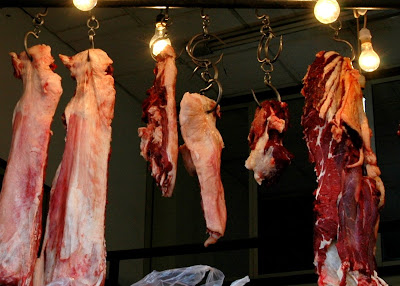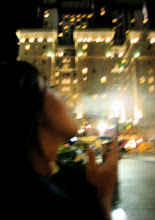My friend and I wandered around the old city with not much of a plan, finding ourselves in the late afternoon in front of a Bavarian restaurant called Hans Brauerei that oddly enough served Brazilian barbecue with only two beers on tap. With little else of the city left to see, we decided to get the evening started early with a pint, or two. That night, a request for a restaurant recommendation from our taxi driver brought us to a large scale "touristical" (coined by a friend -who I might add is Dutch and ESL- and stuck ever since) restaurant that features a tacky indoor model version of the grasslands, tables inside makeshift yurts, and girls dressed in Mongolian outfits who sing traditional songs at your table for 10 kuai per rapidfire song. It is in Mongolian custom to toast guests with baijiu, the 'intoxicating' white spirits I've written about. A bottle of baijiu, six dishes, and 3 songs later, I am speaking Mongolian and could give birth to a lamb.
The next day we find ourselves a sketchy tour company operating out of an unmarked white van. A quick prayer for the preservation of my livers, and we jumped in to promises of a famous sand dune four hours from the city. This was the closest thing to the Gobi desert, but felt literally more like a miniature sandbox operated by cash hungry boors. I could actually see within three hundred meters where the sand ended and the highways began. Not quite as alluring as the Gobi, but still have some pictures to show for it.
The following day, the same tour guide took us to the Xilamuren "grassland", which felt more like a ponyland, where you pay foreigner prices for a horse ride and are not allowed to leave the tourist sites to wander into the residential areas. We rented some quads and raced through the grassy fields with them, stopping at a "local's" home for salty yak milk tea and yogurt candies. The grasslands were still premature and would not turn a brilliant green for another month, but surprisingly I am loving how the pictures have turned out!
And that was Inner Mongolia. Will write about Datong and Tsingdao very soon.
























Love the photo of Marcus and the sand...he looks like he's straight out of a 1980's western film. Love the adventure!
ReplyDeleteI didn't mean to be anonymous, it Clare, just didn't know how to post any other way..hahah
ReplyDelete